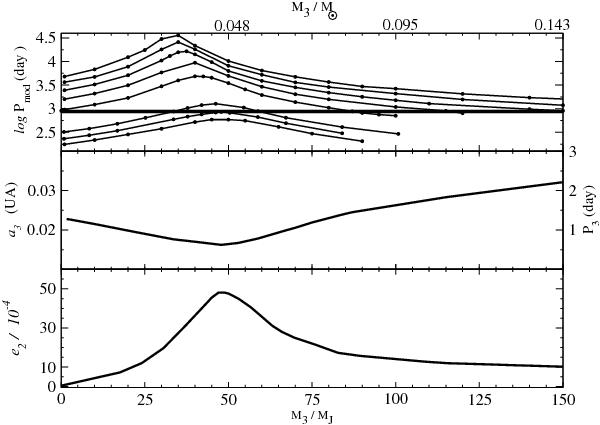Fig. 8

Summary of our results: the upper panel shows the period of the long-term modulation in binary eccentricity as a function of the perturber mass (in Jupiter masses). Each curve corresponds to different P3/P2 ratios taken from 12 to 48 (lower and upper curves, respectively). The thick horizontal line shows the observed value of the VLPP. Only solutions that cross this line can explain the VLPP. The middle panel shows the perturber mass and orbital radius combinations that result in a long-term modulation of the binary orbit equal to the VLPP. The lower panel shows the amplitude of the binary eccentricity perturbation for those solutions.
Current usage metrics show cumulative count of Article Views (full-text article views including HTML views, PDF and ePub downloads, according to the available data) and Abstracts Views on Vision4Press platform.
Data correspond to usage on the plateform after 2015. The current usage metrics is available 48-96 hours after online publication and is updated daily on week days.
Initial download of the metrics may take a while.


